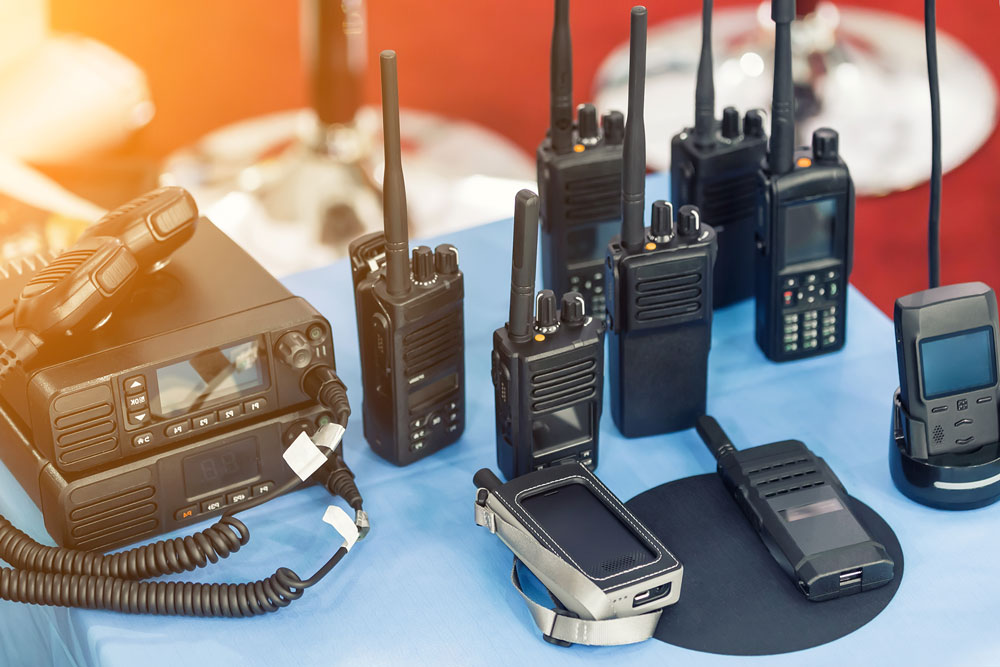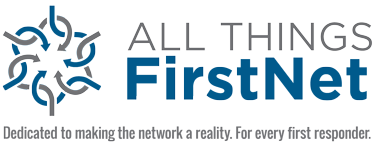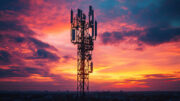
Today, when police, fire, and EMS personnel communicate with each other, chances are they’re doing so over a public safety network. They do so over legacy Land Mobile Radio (LMR) networks or public safety grade cellular networks such as FirstNet. According to Chief (Retired) Ken Kehmna, Senior Operations Advisor with the Western Fire Chiefs Association, “a public safety network enables first responders to coordinate routine operations and critical incidents, giving us the ability to communicate with each other at all times, no matter how dire the situation.”
How Public Safety Networks Work
In order to support the large bandwidth and high data throughput required to support data, voice, and video traffic between first responders, today’s public safety networks operate over commercial 4G/5G LTE cellular networks.
“First responders traditionally relied on land mobile radio (LMR) systems for first responder communications,” said Chief Kehmna. “Unfortunately, LMR technology — which we associated with the Push-to-Talk handheld radios that first responders have used for decades cannot support anything beyond local voice communications.”
This is why today’s public safety networks use wireless broadband for first responder communications. “We use wireless broadband, the kind used for cellular telephones, for all kinds of emergency communications,” Chief Kehmna said. “We use it for everything, whether it’s emergency radio communications, mapping and routing to incident scenes for first responder vehicles, live video sharing on scene, or transmission of medical data to a hospital through cardiac monitors. Just like wireless technologies have crept into every space of our lives on a day-to-day basis, it has also crept into public safety. Cellular has become a necessary and essential part of public safety from contacting 911 to responder communications and community alerting.”
FirstNet as the Nationwide Public Safety Network
In the United States there is a wireless broadband network built exclusively by and for public safety: FirstNet. Known as the Nationwide Public Safety Broadband Network / FirstNet is built exclusively for public safety
In the United States, there is only one wireless broadband network built by and for public safety: FirstNet. It was legilated by Congress in response to recommendations from the 9/11 Commission. It examined what went wrong during the 9/11 terrorist attacks and sought solutions to remedy those problems.
One of the biggest problems exposed by 9/11 was a glaring weakness in U.S. public safety
communications systems. Emergency response teams at the World Trade Center could not communicate with each other due to incompatible proprietary LMR systems.
This is why the 9/11 Commission recommended the creation of a single, interoperable public safety network for first responders. Congress stepped up in 2012 and passed legislation that created the First Responder Network Authority (FirstNet Authority) to build, deploy and operate FirstNet across America.
The FirstNet Authority (the agency) oversees the nationwide FirstNet network, which AT&T operates under a contractual public-private partnership with the agency. Today, this public safety network is approaching 8 million connections and over 30,000 public safety agencies nationwide, and more are voluntarily joining every day.
What Makes FirstNet Unique
Although some of America’s commercial cellular carriers have launched their own public safety offerings for profit, none have been able to match FirstNet’s unique public safety-first characteristics.
“First of all, FirstNet is a standalone public safety network with its own 700 MHz spectrum (Band 14),” said Chief Kehmna. “In contrast, the public safety products offered by other carriers are just sliced-off pieces of their existing commercial networks. Next, FirstNet ensures that first responders have Priority service and Preemption rights on all of AT&T spectrum bands on AT&T FirstNet. These are not promises in marketing materials: They are engineered into the network and backed by a contractual commitment to performance.”
Band 14 and Dedicated Public Safety Core
Band 14 can best be understood as a VIP lane for first responder traffic. On a highway, a VIP lane can be used by general traffic unless a situation arises where emergency traffic needs priority access. In such cases general traffic is barred from the VIP lane.
Band 14’s radio spectrum is prioritized for public safety users. The same is true for the network management infrastructure that manages this spectrum. “FirstNet’s infrastructure partnership with AT&T means that FirstNet wireless devices connect to a distinctly different network, to ensure access and security,” Chief Kehmna said. “That’s not the case with other public safety networks, which do not offer dedicated service and are not controlled by public safety..”
Priority and Preemption Service for First Responders
As mentioned above, FirstNet’s Band 14 offers Priority and Preemption services to first responders. “AT&T is allowed to carry non-first responder traffic on Band 14,” said Chief Kehmna. “However, first responder traffic always comes first: That’s what Priority means. When traffic increases during emergency situations, first responder communications have the right to preempt any non-first responder traffic on the network. Preemption gives us the ability to automatically deprioritize non-emergency users from the network, recognizing that what we need to communicate in that moment is more important and comes first.”
Coverage Expansion and Rural Connectivity
Because FirstNet was created to serve public safety first, it has extensive coverage across the United States. In fact, FirstNet’s wireless footprint covers rural and remote areas that other carriers ignore for profitability reasons. Today, FirstNet covers more than 250,000 square miles more than other carriers, and has announced another $2 billion for building even more coverage.
“Not only does FirstNet offer better rural connectivity than other public safety networks, but the people at the FirstNet Authority — who are public safety veterans themselves — are always providing public safety input to do better for all of its users,” Chief Kehmna said. “This is why FirstNet’s people have been on a national listening tour, going to rural communities and tribal nations to find out what they still need. FirstNet continues to expand coverage through new tower construction, plus deployable assets for temporary coverage and satellite connectivity for remote areas.”
As well, AT&T and AST SpaceMobile are working together to connect satellite directly to standard AT&T/FirstNet phones using AT&T spectrum that extend cellular voice, texting and broadband data directly into coverage gaps for FirstNet users.Trials of this new service are planned for this year. “This is going to significantly improve coverage in those rural areas where a terrestrial tower solution isn’t sufficient,” said Chief Kehmna.
Benefits of FirstNet for Communities
When it comes to providing reliable first responder communications across America, FirstNet’s public safety network provides our communities with unmatched benefits.
“No other network has FirstNet’s Band 14 spectrum nor its Priority and Preemption service,” Chief Kehmna said. “No one else has FirstNet’s coverage, its reliable 4G/LTE service, and its multi-billion expansion to 5G using money collected from revenues, not taxpayers. Add the fact that FirstNet provides the latest and best equipment they possibly can to first responders, and their communities benefit from better response times, better coordination and situational awareness during emergencies, and improved safety for first responders and the public. This level of service is guaranteed by a binding performance contract.”
Why FirstNet should be reauthorized before 2027
The Congressional act that created FirstNet in 2012 requires the First Responder Network Authority agency be evaluated to be reauthorized by 2027 or shut down. Given how well the FirstNet public safety network has performed since its inception, first responder associations across the nation are calling on Congress to reauthorize FirstNet now, and this time for good. It has been an undeniable success and the nattion’s first responders deserve to have the best available for them to save lives and protect those they serve.
“It takes time to move things through Congress, so the effort to renew FirstNet needs to start immediately,” said Chief Kehmna. “FirstNet has already delivered on the 9/11 Commission’s recommendations, and continues to do so today. To ensure that this public safety network continues to keep Americans safe in the future, we need to renew FirstNet as soon as possible.”
FAQ
What is a public safety network used for?
A public safety network like FirstNet provides reliable nationwide communications for police, fire, and EMS.
What technologies power public safety communications?
Public safety networks like FirstNet are powered by 4G/LTE wireless broadband services (and soon 5G as well), along with ruggedized smartphones and tablets.
How do public safety networks support first responders during disasters?
A public safety network like FirstNet ensures that police, fire, and EMS can communicate with each other during disasters, even when commercial cellular networks are overloaded with traffic.





Be the first to comment on "What is a Public Safety Network and How Does it Work?"